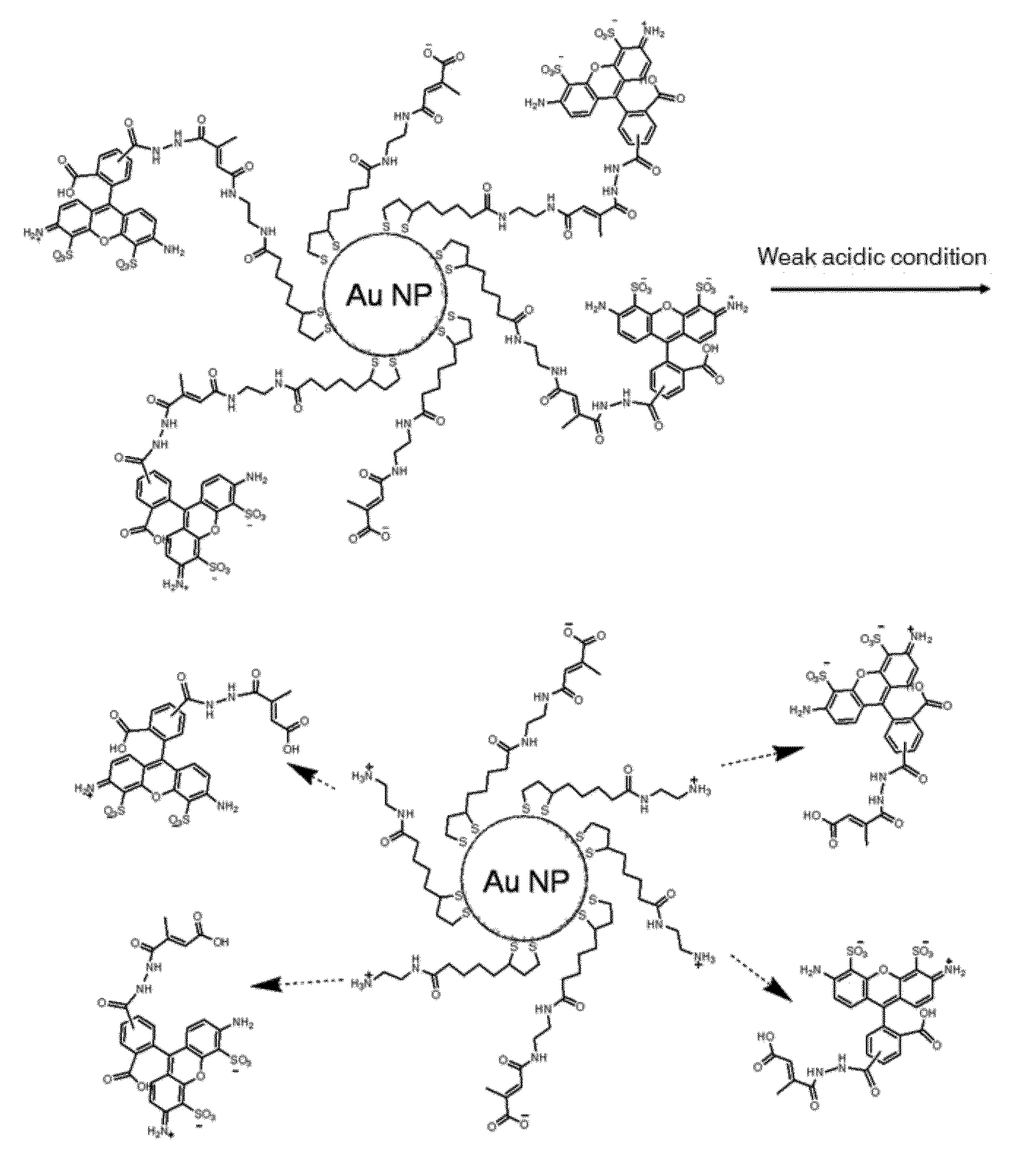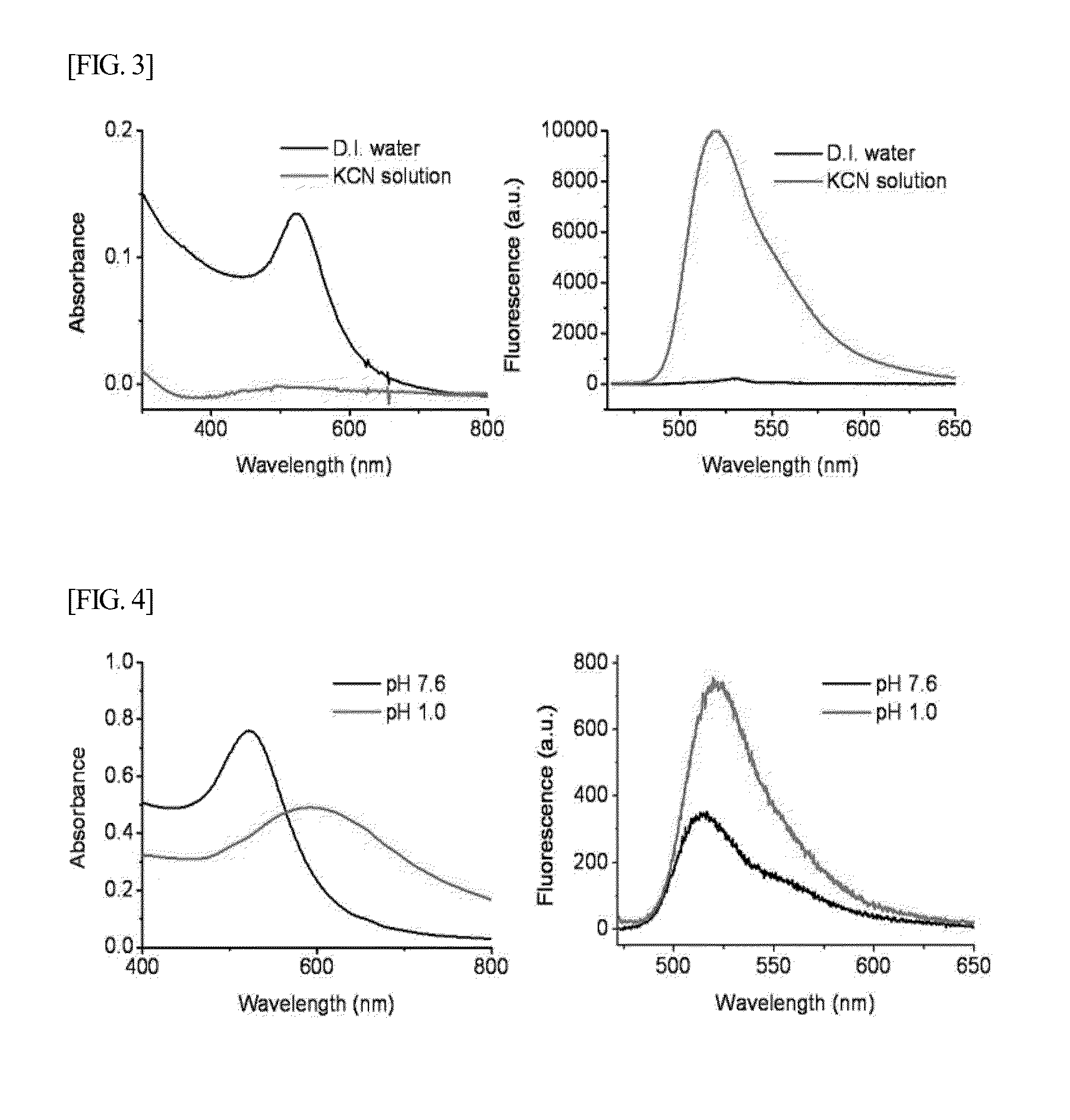ANTICANCER AGENT DELIVERY SYSTEM USING pH-SENSITIVE METAL NANOPARTICLES
a nanoparticle and anticancer technology, applied in the direction of group 3/13 element organic compounds, natural mineral layered products, drug compositions, etc., can solve the problems of no therapeutic function of the self, and achieve the effects of enhancing the therapeutic efficacy of cancer, and reducing the risk of cancer
- Summary
- Abstract
- Description
- Claims
- Application Information
AI Technical Summary
Benefits of technology
Problems solved by technology
Method used
Image
Examples
examples
Synthesis of pH-Sensitive Ligand
[0044]A solution of lipoic acid in anhydrous chloroform was mixed at room temperature for 5 min with 1.3 equivalents of carbonyl diimidazole under a vacuum condition with stirring, followed by separating the reaction solution layer from the remaining carbonyl diimidazole. Ethylene diamine was dissolved in an amount corresponding to 5 equivalents of the lipoic acid in anhydrous chloroform in a nitrogen atmosphere, cooled in an ice bath, and mixed for 1 hour with the separated reaction solution by stirring. The resulting reaction solution containing the product was extracted three times with 10% NaCl and once with deionized water and mixed at room temperature for 24 hours with citraconic anhydride to form a solid substance. After filtration, the solid substance was dissolved in an aqueous solution which was adjusted to a pH of 9 with NaOH. The resulting solution was stirred at room temperature for 4 hours together with one equivalent of NaBH4 to afford ...
PUM
| Property | Measurement | Unit |
|---|---|---|
| Size | aaaaa | aaaaa |
| Sensitivity | aaaaa | aaaaa |
| Chemical formula | aaaaa | aaaaa |
Abstract
Description
Claims
Application Information
 Login to View More
Login to View More - R&D
- Intellectual Property
- Life Sciences
- Materials
- Tech Scout
- Unparalleled Data Quality
- Higher Quality Content
- 60% Fewer Hallucinations
Browse by: Latest US Patents, China's latest patents, Technical Efficacy Thesaurus, Application Domain, Technology Topic, Popular Technical Reports.
© 2025 PatSnap. All rights reserved.Legal|Privacy policy|Modern Slavery Act Transparency Statement|Sitemap|About US| Contact US: help@patsnap.com



